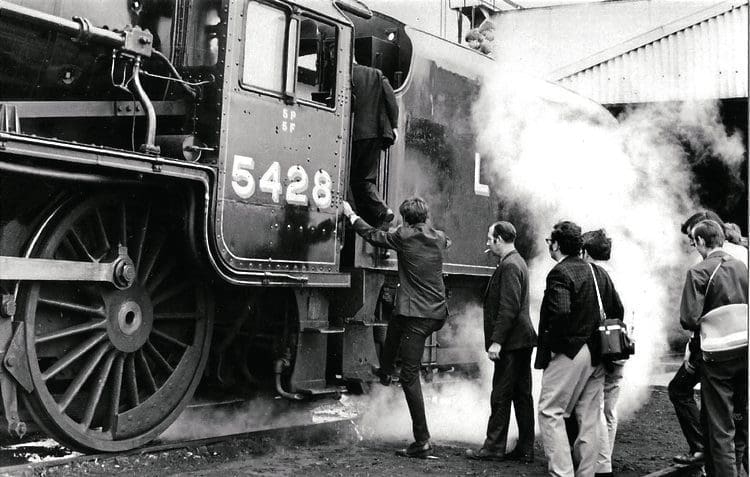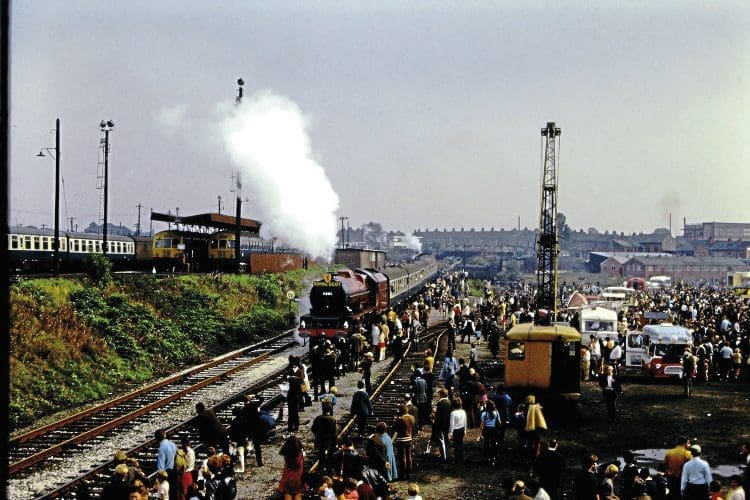Less than seven weeks after the ‘Fifteen Guinea Special’ marked the end of BR main line steam, the public were admitted to a former depot where the roots of railway preservation had firmly taken hold. Tyseley Locomotive Works’ September 29-30 open day will mark 50 years since it held its first, writes Robin Jones.

Read more News and Features in Issue 244 of HR – on sale now! Any archive enquiries? Contact Jane Skayman on 01507 529423 or email [email protected]
As a young child, the workaday Birmingham suburb of Tyseley was hallowed ground. My elder brother Stewart took me trainspotting at Widney Manor station on the Birmingham Snow Hill to Leamington line from an early age, and our dad worked as head of printing at the Midland Electrical Manufacturers factory in Reddings Lane, Tyseley.
Enjoy more Heritage Railway reading in the four-weekly magazine.
Click here to subscribe & save.
Occasionally on Saturday mornings we would be taken into the works, and to get the bus back often we walked down to Warwick Road. There, on a back siding from Tyseley steam shed, would often stand in all its glory a GWR-design 4-6-0 for us to gaze and marvel at.
Little did we think in our wildest dreams that Tyseley shed would, within the ensuing decade, become a hub of the emerging and still-embryonic railway preservation movement, and keep our precious steam alive.
Tyseley shed was opened in July 1908, superseding a smaller depot at Bordesley to the north.
It was a Churchward standard brick-built Great Western Railway two-turntable shed, similar in design but not in size to other GWR depots like Old Oak Common.
The east roundhouse catered for passenger engines, while the west one catered for freight. Originally, 72 engines were allocated to it, rising to around 100 by the Fifties.

It served the growing GWR network to the south west of the city, including the cross-country route to Stratford-upon-Avon and Cheltenham for Bristol and the south west. The North Warwickshire Line, the northern-most section of that route, also opened in 1908.
However, Tyseley was always secondary to Wolverhampton Stafford Road, which handled the expresses from the West Midlands.
Read more News and Features in Issue 244 of HR – on sale now! Any archive enquiries? Contact Jane Skayman on 01507 529423 or email [email protected]
The freight roundhouse was closed in 1963 and Tyseley shed finally closed in November 1966, when it housed smaller locomotives like tank engines for suburban services, although steam officially lasted at Tyseley until 1967, with many LMS and BR locomotive types then appearing there.

The depot became known as Tyseley Traction Maintenance Depot, but steam locomotives still continued to visit the site for wheel turning in the new factory until the demise of main line steam in summer 1968. Both roundhouses had gone by the end of that year.
When the Talyllyn Railway was saved in 1951, its preservation society’s secretary, Pat Whitehouse, and its treasurer, Birmingham accountant Pat Garland, struck up a lifelong friendship with steam at its heart.
In 1958, Pat Whitehouse began work on the BBC’s much-loved Railway Roundabout series of 25min children’s hour programmes.
Read more and view more images in Issue 245 of HR – on sale now!
Advert
 Enjoy more Heritage Railway reading in the four-weekly magazine. Click here to subscribe.
Enjoy more Heritage Railway reading in the four-weekly magazine. Click here to subscribe.











